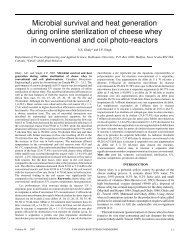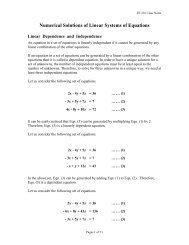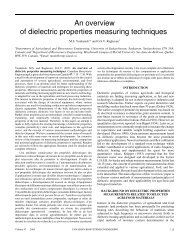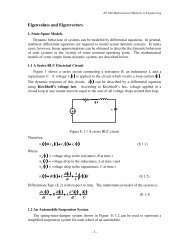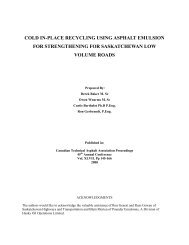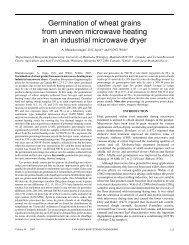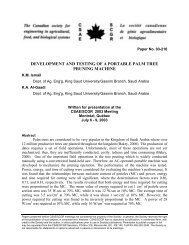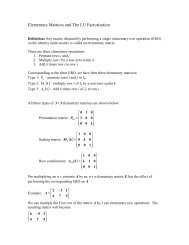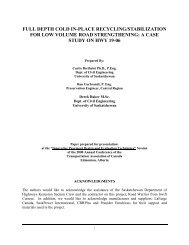Xilinx - Design Reuse Methodology for ASIC and FPGA Designers.pdf
Xilinx - Design Reuse Methodology for ASIC and FPGA Designers.pdf
Xilinx - Design Reuse Methodology for ASIC and FPGA Designers.pdf
Create successful ePaper yourself
Turn your PDF publications into a flip-book with our unique Google optimized e-Paper software.
163 Coding <strong>and</strong> Synthesis TipsFine-grain <strong>ASIC</strong> architectures have the ability to tolerate a wide range of RTL coding styleswhile still allowing designers to meet their design goals. Course-grain <strong>FPGA</strong> architecture like<strong>Xilinx</strong>’s Virtex <strong>and</strong> Altera’s Apex are more sensitive to coding styles <strong>and</strong> design practices. Inmany cases, slight modifications in coding practices can improve the system per<strong>for</strong>manceanywhere from 10% to 100%. <strong>Design</strong> reuse methodologies already stress the importance of goodcoding practices to enhance reusability. Today, IP designers are utilizing many of these practices,as described in the <strong>Reuse</strong> <strong>Methodology</strong> Manual, resulting in modules that per<strong>for</strong>m much faster in<strong>FPGA</strong>s than traditional <strong>ASIC</strong> designs converting to <strong>FPGA</strong>s.The most common reason why a given design runs much slower in a <strong>FPGA</strong> compared to an <strong>ASIC</strong>is an excessive number of logic levels in the critical path. A logic level in a <strong>FPGA</strong> is consideredto be one Combinatorial Logic Block (CLB) or Logic Element (LE) delay. In the example of aCLB, each CLB has a given throughput (alt. propagation?) delay <strong>and</strong> an associated routing delay.Once the amount of logic that can fit into one CLB is exceeded, another level of logic delay isadded. For example, a module with 6 to 8 <strong>FPGA</strong> logic levels would operate at ~50MHz. Thiscourse-grain nature of <strong>FPGA</strong> may yield a higher penalty <strong>for</strong> added logic levels than with <strong>ASIC</strong>s.This section covers some of the most useful hints to enhance speed through reducing logic levels<strong>for</strong> <strong>FPGA</strong> SRAM architectures.3.1 Abundance of Registers<strong>FPGA</strong> architectures are generally register-rich. RTL coding styles that utilize registers can beemployed to dramatically increase per<strong>for</strong>mance. This section contains several coding techniquesthat are known to be effective in increasing per<strong>for</strong>mance by utilizing registers.3.1.1 Duplicating RegistersA technique commonly used to increase the speed of a critical path is to duplicate a register toreduce the fan-out of the critical path. Because <strong>FPGA</strong>s are register-rich, this is usually anadvantageous structure since it can often be done at no extra expense to the design.Example 2 – Verilog Example of Register with 64 Loadsmodule high_fanout(in, en, clk, out);input [63:0]in;input en, clk;output [63:0] out;reg [63:0] out;reg tri_en;always @(posedge clk) tri_en = en;always @(tri_en or in) beginif (tri_en) out = in;else out = 64'bZ;endendmodule



